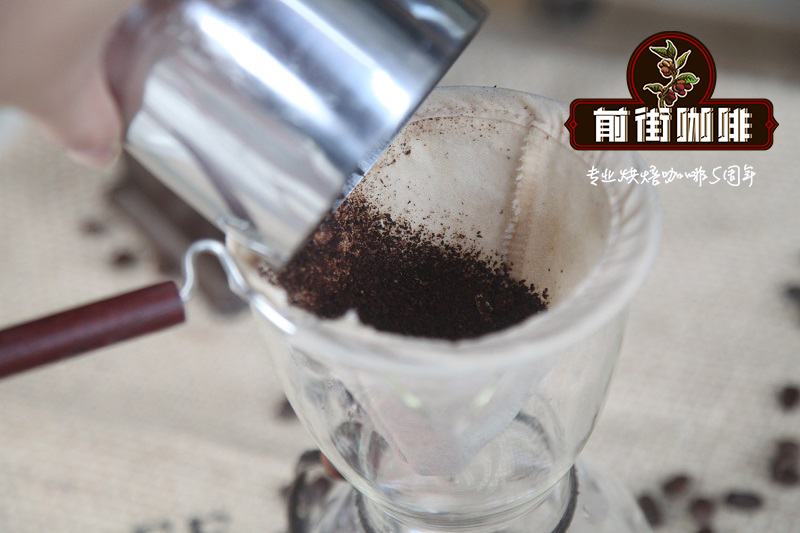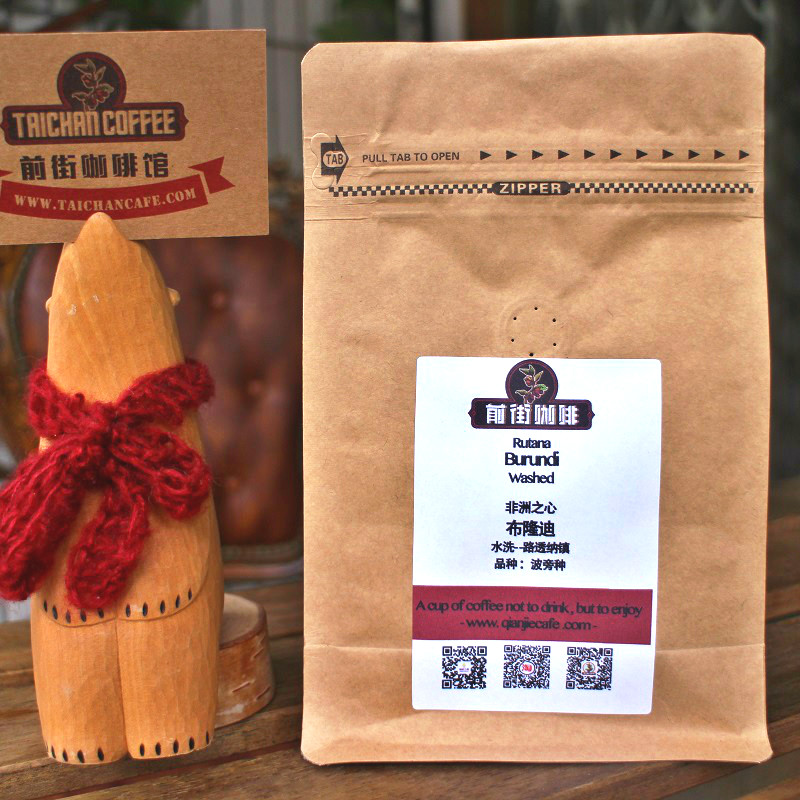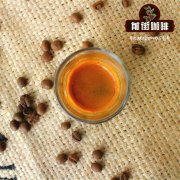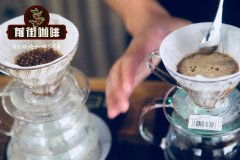World Coffee Tour-Burundi

Professional coffee knowledge exchange more coffee bean information please follow the coffee workshop (Wechat official account cafe_style)
Burundian coffee
Coffee was brought to Burundi by the Belgian colonists in 1920, and as a result of the policies imposed by the Belgian colonists, by 1933, each farmer was required to plant at least 50 coffee trees. Burundi achieved independence in 1962 and coffee production was gradually privatized. Due to the overall political climate change, the coffee industry began to become privatized from 1972 to 1991.
Before 1993, the growth of coffee cultivation in Burundi was very stable, but the civil war in 1993 led to a sharp decline in production. Since then, Burundi has made efforts to increase both coffee production and coffee prices at the same time. Because of the impact of the civil war on the economy, it has become very difficult for the government to invest in industry. Until 2011, Burundi had the lowest per capita income of 90% of the world's population dependent on agriculture. Burundian coffee and tea exports account for 90 per cent of all exports. The coffee industry is slowly picking up, but it is still hard to reach the level of the 1980s. Nevertheless, we still have high hopes for Burundian coffee. 650000 families are dependent on the planting industry, and it will make sense to improve the quality of crop cultivation while driving prices. But residents' fear of political instability has become the most prominent challenge for cultivation development in Burundi.
The geography of Burundi is very suitable for growing coffee. A large number of mountains provide the necessary elevation and climate. However, there is no coffee farm in Burundi, and coffee is grown by a large number of small farmers. Now, these farmers are systematically planting around 160 washing treatment plants across the country. The 2x3 processing plants in the country are owned by the state. Hundreds to 2,000 coffee growers send their own fresh fruit to these processing plants for processing.
In each region, these plants are centrally managed by SOGESTAL (a Burundian processing plant organization), which has done a lot of positive work in recent years to improve the quality of Burundian coffee by providing more useful help to the region.
The best coffee in Burundi is often washed with bourbon varieties. Burundi and its neighbour Rwanda have a lot in common: they have similar elevations and varieties of coffee, and both landlocked countries have prevented the export of raw coffee beans to coffee consuming countries in time. Like Burundian coffee, coffee from Rwanda faces the potato effect.

Traceability:
Until recently, SOGESTAL in every region of Burundi used to mix coffee from different washing plants. This means that Burundian coffee can only be traced back to each SOGESTAL.
In 2008, Burundi planned to start the production of boutique coffee, allowing more direct or indirect traceability procurement. In 2011, Burundi organized the Coffee Raw Bean Competition called the prestige Cup, which was the predecessor of the extraordinary Cup. Some coffee from individual processing plants will be sorted out and graded according to quality, and then the origin information will be released for auction. This means that we will see more excellent Burundian coffee in the future, and Burundian coffee has great potential advantages.
Taste tendency:
Good Burundian coffee has a complex berry flavor and a strong sense of juice.
Population:
2013 production: 10020 tons
Burundi is a very small country, so it does not have a clear planting area. The whole country is a suitable area for growing coffee, so coffee is grown all over the country.
Banding province
Located in the northwest of Burundi
Altitude: average 1350 m
Harvest time: April-July
Varieties: bourbon, Jackson, Mibrizi and SL series
Bujumbura agricultural province
In western Burundi
Altitude: average
Buruli
In the southwest of Burundi, it contains three national parks of Burundi.
Altitude: average
Cibitoke
The province is located in the most northwestern part of Burundi and borders the Republic of the Congo.
Altitude: average
Kitga
Located in the central region, it has a state-owned tanning plant and carries out strict quality control before export.
Karuzi
This area is to the west of the middle.
Altitude: average
Kayanza
The northern region, near the border with Rwanda, owns the second largest processing plant in the country.
Altitude: average
Kilondo
This area is located at the northernmost tip of Burundi.
Altitude: average
Makamba
The southernmost province of Burundi
Mulamvia
In a small area in the middle of the country.
Altitude: average
Muyinga
Bordering Tanzania in the north of Burundi
Muvalo
Another small area in the middle of the country
Ngozi
The most concentrated planting area in the country, located in the north of the country, has 25% of the country's washing treatment plants.
Altitude: average
Rutana
In southern Burundi, west of the Kiki Mountains, there is a washing treatment plant.
Professional coffee knowledge exchange more coffee bean information please follow the coffee workshop (Wechat official account cafe_style)
Important Notice :
前街咖啡 FrontStreet Coffee has moved to new addredd:
FrontStreet Coffee Address: 315,Donghua East Road,GuangZhou
Tel:020 38364473
- Prev

How much is Starbucks hand coffee? how many beans does Starbucks hand coffee have?
Professional coffee knowledge exchange more coffee bean information please follow the coffee workshop (Wechat official account cafe_style) Starbucks' first overseas selection roaster was officially unveiled in Shanghai. The world's largest Starbucks bakery, with a construction area of 2700 square meters, is located in Taiguhui, Xingye, Shanghai, facing Nanjing West Road, one of the most prosperous commercial streets in Shanghai.
- Next

Burundi-Butan Ministry Cooperative
Professional coffee knowledge exchange more coffee bean information please follow coffee workshop (Wechat official account cafe_style) ■ country: Burundi ■ Manor: Butan Ministry Cooperative ■ production area: ■ Variety: ■ treatment method: washing ■ Harvest time: 2016 Cup Test report: Butan Ministry Cooperative this is a cooperative located in Bujumbura Province. The small cooperative has about 30 members
Related
- What documents do you need to go through to open a coffee shop? coffee shop coffee shop certificate processing process
- How to purchase Coffee beans in small Cafe how to choose a suitable supplier for domestic Coffee supply Company
- How to drink Starbucks Fragrance White Coffee? how to make Australian White Coffee? what Italian coffee beans are recommended?
- The Story of Flora Coffee: the name of Flora Coffee Bean and the implication of the Flowers on Florna Coffee
- How much does a cup of coffee cost? How much is the profit of a cup of coffee? What is the profit of the coffee shop in a year?
- Yunnan small Coffee, known as "fragrant Coffee", introduces the characteristics of Alpine Arabica Coffee producing areas in Yunnan, China
- 2023 latest Starbucks full menu price list how much is a cup of Starbucks coffee what is better to drink the most popular hot and cold drinks recommended
- Starbucks different kinds of Coffee Price list Starbucks menu 2023 Top Ten Best drinks in Starbucks
- Starbucks Spring praise Comprehensive matching Coffee Bean theme Story Packaging implication and taste description
- The cost of a cup of coffee latte American coffee cost price and selling price

